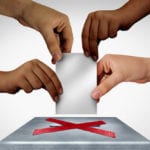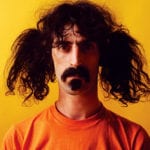 Music
Music  Music
Music  History
History 10 Less Than Jolly Events That Occurred on December 25
 Weird Stuff
Weird Stuff 10 Funny Ways That Researchers Overthink Christmas
 Politics
Politics 10 Political Scandals That Sent Crowds Into the Streets
 Weird Stuff
Weird Stuff Ten Bizarre Facts About The Doge Meme
 Our World
Our World 10 Ways Your Christmas Tree Is More Lit Than You Think
 Movies and TV
Movies and TV The 10 Coolest Stars to Set Sail on The Love Boat
 History
History 10 Things You Didn’t Know About the American National Anthem
 Technology
Technology Top 10 Everyday Tech Buzzwords That Hide a Darker Past
 Humans
Humans 10 Everyday Human Behaviors That Are Actually Survival Instincts
 Music
Music 10 Surprising Origin Stories of Your Favorite Holiday Songs
 History
History 10 Less Than Jolly Events That Occurred on December 25
 Weird Stuff
Weird Stuff 10 Funny Ways That Researchers Overthink Christmas
Who's Behind Listverse?

Jamie Frater
Head Editor
Jamie founded Listverse due to an insatiable desire to share fascinating, obscure, and bizarre facts. He has been a guest speaker on numerous national radio and television stations and is a five time published author.
More About Us Politics
Politics 10 Political Scandals That Sent Crowds Into the Streets
 Weird Stuff
Weird Stuff Ten Bizarre Facts About The Doge Meme
 Our World
Our World 10 Ways Your Christmas Tree Is More Lit Than You Think
 Movies and TV
Movies and TV The 10 Coolest Stars to Set Sail on The Love Boat
 History
History 10 Things You Didn’t Know About the American National Anthem
 Technology
Technology Top 10 Everyday Tech Buzzwords That Hide a Darker Past
 Humans
Humans 10 Everyday Human Behaviors That Are Actually Survival Instincts
10 Ways Sport Has Changed History
Humans are social animals, and one of the ways we bond with each other is by playing games. When an adult plays games and takes it seriously, it is a sport. The competitive nature of sport has given it a crucial role in history—as nation competes with nation and individuals struggle to be the best. It is no wonder then that sports have changed the course of history more than once.
10 Nika Riots

We’re all familiar with the riots that can follow a big sports match. Some people riot when their team loses and some when their team wins. But what we think of as riots are nothing compared to those in the ancient world.
For the Romans, horse racing was big business. The richest sportsman who ever lived was Gaius Appuleius Diocles, a Roman charioteer of the second century AD who amassed a fortune equivalent to billions of dollars today. There was also big money to be made from betting on the outcome of a race, and people became heavily invested in their teams.
The Romans had teams of charioteers: the Reds, Whites, Greens, and Blues. By the time the capital moved to Constantinople, there were just two: Green and Blue. With only two choices, the support of each team became more than a passing fancy. It was a political statement and a life choice. In AD 501, the Greens attacked the Blues and killed 3,000 people.
In AD 532, a tense situation exploded into revolt when Emperor Justinian cracked down on this violence. Soon, both sides were united in anger. They rioted, chanting, “Nika!” (“Win!”)—the usual cry in the hippodrome. They began to burn the capital city to the ground. They even crowned a rival emperor.
The riot was only suppressed when troops surrounded the hippodrome and massacred those inside. Maybe 30,000 people were killed, 1 in 10 of the population at the time.
9 Ping-Pong Diplomacy
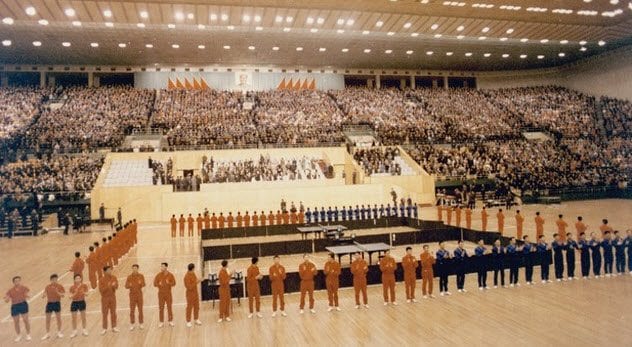
The Cold War split the world in two. The communist countries presented a frosty wall to the West. In fact, China was one of the most impenetrable and inscrutable nations after it went communist. The Great Wall of China was finally breached by a ping-pong ball. Time magazine referred to it as “the ping heard around the world.”
While the US ping-pong team was competing in Japan in 1971, they received an invitation to tour China. This was the first invitation for Americans into Communist China. It proved to be an opening that President Nixon made use of. He sent Secretary of State Henry Kissinger to open the relationship further.
Within a year, Nixon himself was in China for a meeting. Nixon described his visit as “the week that changed the world.” Chinese Premier Chou En-lai said, “Never before in history has a sport been used so effectively as a tool of international diplomacy.”
8 Henry VIII’s Wrestling Match

International relations between European monarchies in the 16th century were always fraught. As well as the impersonal forces of trade, there were the whims of rulers shaping the world. How kings got along could decide the fate of nations. In 1520, King Henry VIII of England and King Francis I of France met to create a lasting peace between their two kingdoms.
This meeting was held near Calais. So sumptuous were the preparations that it was known as “the Field of the Cloth of Gold.” Each king sought to outdo the other in generosity. The two monarchs met, embraced, and feasted. They also jousted in the chivalric style of the time. Each was shown to their best advantage.
That is, until King Francis challenged Henry to a wrestling match. Both kings thought they were all that a prince should be. Unfortunately, Francis tripped and pinned Henry. Henry did not take this dishonor with quiet equanimity. The English felt that Francis had used a typically treacherous French trick.
All the expense of the meeting was wasted as no treaty was signed, although not wholly due to the wrestling bout. It certainly did not foster a feeling of brotherhood between the royal duo.
7 Turkey vs. Armenia Football (Soccer) Match
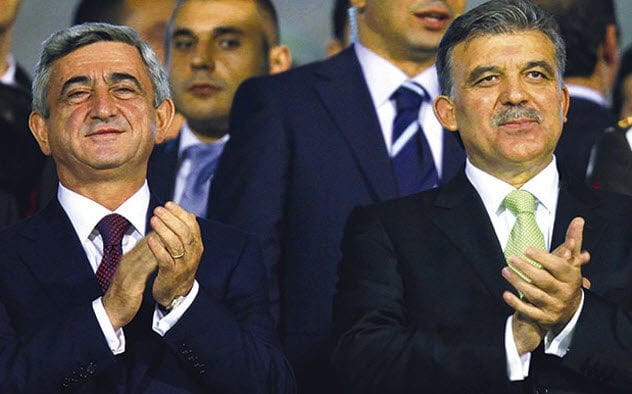
There are few topics as likely to start an argument as discussing the Armenian Genocide. To claim that the deaths of 1.5 million Armenians during World War I was a genocide perpetrated by the Turkish is controversial (especially to the Turkish). So when Turkey was drawn to play against Armenia in qualifiers for the 2010 World Cup, it seemed likely to be a tense match.
Armenia had not established a diplomatic relationship with Turkey in the years after 1991 when Armenia gained its independence from the USSR. What could have been a disaster became an example of “football diplomacy.”
Armenian President Serzh Sargsyan invited Turkish President Abdullah Gul to come to the game and sit beside him. Sargsyan said, “Whatever our differences, there are certain cultural, humanitarian, and sports links that our peoples share, even with a closed border.”
There were protests against the visit, but the match passed peacefully even with a Turkish victory. Many credit the match with helping to pave the way for the return of full diplomatic relations which followed soon afterward.
6 World War I Football (Soccer) Cease-Fire
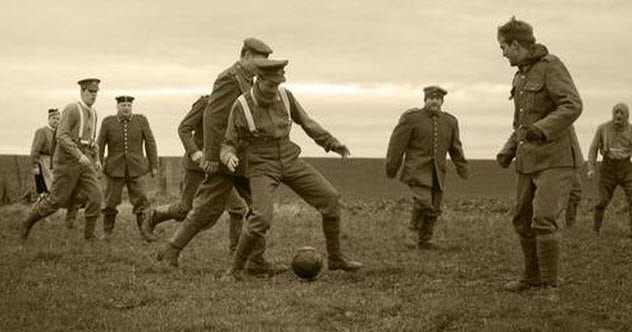
When World War I began, a common belief was that “it will all be over by Christmas.” The war dragged on for four years, but no one knew that would happen at the beginning. Young men all over Europe signed up to fight, afraid that they would miss the big show if they did not join quickly.
By Christmas 1914, it was clear that the war had ground to a slow waltz of deeply entrenched armies facing each other across a field of mud. On Christmas Eve, soldiers heard the other side singing carols. Messages were shouted between trenches. On Christmas Day, the two sides met in no man’s land. Gifts were exchanged, and famously, they played football.
It’s impossible to say what the effects of this temporary truce were. How many people survived that otherwise might have been killed that day? What if one of the bullets not fired that day had been destined to strike a German soldier by the name of Adolf Hitler? How did the knowledge that their opponents were not monsters but lads just like them affect the soldiers?
Frightened by the threat of troops not fighting as viciously as they were expected to, leaders on both sides took efforts to stop any repeat of this impromptu truce.
5 Kings And Queens Should Stay Away From Horse Riding
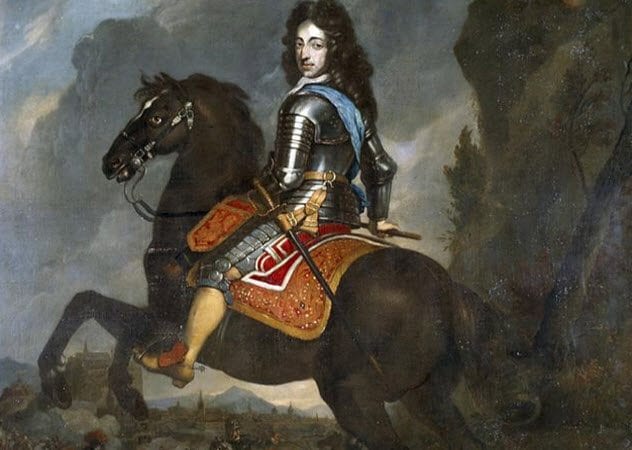
Horse racing is called the sport of kings. There is something about sitting astride a powerful creature that has always attracted those who like to look virile. Next time you’re in a gallery, look at the number of monarchs painted in the saddle. Horse riding has been a pleasant pastime for most royals, but they really should be careful. The list of those killed by horses is quite extensive.
William III, king of England, died when his horse stumbled on a molehill. He fell and broke his collarbone. His health rapidly failed, and he died. His opponents raised a toast to the mole who killed their foe as “the little gentleman in the black velvet waistcoat.”
Alexander III of Scotland rode his horse off a cliff in the dark and died on the beach below. Pope Urban VI died an even more ignominious death. Instead of falling from a valiant steed, he met his end in a tumble from a mule.
Other monarchs that met equine ends include Prince Alfonso of Portugal, Frederick Augustus II of Saxony, Duke Geoffrey of Brittany, Isabella of Aragon, Leopold V of Austria, Louis IV of France, and William the Conqueror. The current polo-loving princes of Britain should probably be wary.
4 Emily Davison
As shown in the video above, the love affair between royalty and horses can be deadly. In 1913, the king’s horse was also involved in a death. But this time, it was not the king who died.
The suffragette movement had been campaigning for women’s rights, particularly the right to vote, since the late Victorian era. Their campaign involved marches, pamphlets, and speeches. In 1912, their actions became more direct: vandalism, arson, and bombs.
At the 1913 Epsom Derby, Emily Davison played her part in the suffragette movement. As the king’s horse Anmer came toward her, she ran out in front of it. Her motives were unclear. Some believe that she wanted to kill herself. Others believe that she was attempting to affix a flag to Anmer.
Either way, the horse collided with Davison, flinging her through the air. The horse fell, the jockey was concussed, and Davison died from her wounds four days later. As for the suffragette movement, they gained a martyr for their cause who could be used as a rallying point.
3 Henry II Jousting
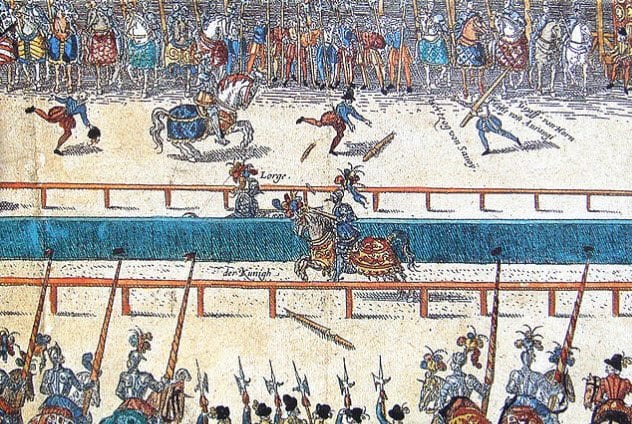
A king was supposed to be the living embodiment of his realm. A healthy and vigorous king represented a strong and powerful nation. People wanted their ruler to be a warrior capable of defending them. To be seen as the ideal knight, kings jousted with each other, taking part in mock wars. Mock wars, however, could have real consequences.
In 1559, a tournament of jousting was held in Paris to celebrate the signing of a pact between France and Spain. King Henry II of France took part in the contests despite being unstable. He was exhausted by the summer heat and the exercise.
He carried on jousting despite his courtiers’ best efforts. A lance struck the king in the face, splintering and stabbing him through the eye and penetrating his brain. The king managed to speak and was carried to his room, where doctors removed the splinters from his head and neck.
The doctors hoped that the king would only lose an eye. They washed his wounds. They attempted to find out how extensive the injuries were by plunging the lance into decapitated heads. Despite their best efforts, the king died nine days after being knocked down.
2 The Modern Olympics
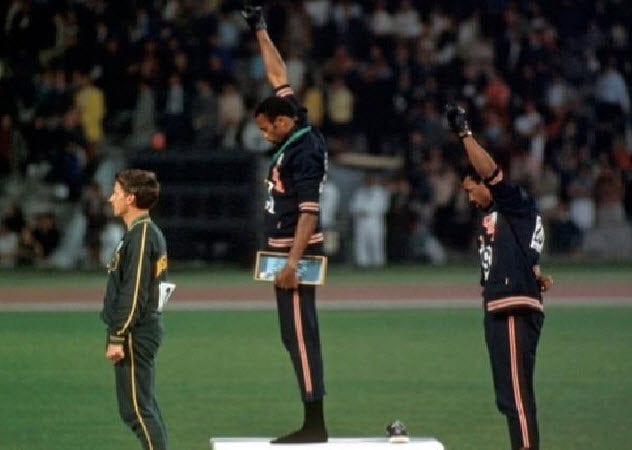
The modern Olympics were an attempt to recreate the ancient games. Pierre de Coubertin, the founder of the modern games, wanted to use sports as a way to bring about internationalism via competition between nations.
When the ancient Olympics took place in ancient Greece, a truce between the city-states was declared. No fighting would take place while the games were on. Such were the noble intentions, and many Olympic Games have changed the world.
In the ancient Olympics, women were forbidden to be athletes. They were only allowed to ride horses. Similarly, at the first modern games in 1896, only men competed. Baron de Coubertin thought that including women would be “impractical, uninteresting, unaesthetic, and incorrect.” Women, however, got a chance to compete at the 1900 games, showing the world that women were real competitors.
Of course, the Olympics could be subverted for political ends. The 1936 games in Berlin were used by the Nazis to showcase their ideas of superiority. Always with an eye for spectacle, the Nazis introduced the idea of a torch relay and lighting a flame. That same Olympics allowed Jesse Owens to win four gold medals and show that Nazi racial ideas were nothing but inventions to make them feel better about themselves.
The Olympics have been used to shine a light on many international matters. The Paralympic Games allowed those with disabilities to show their talents. In 1968, the Mexico City civil rights protest brought the US civil rights campaign to world attention. There will always be arguments about the value of holding Olympic Games, but you cannot argue that they have power.
1 Prince Frederick And The Cricket Ball
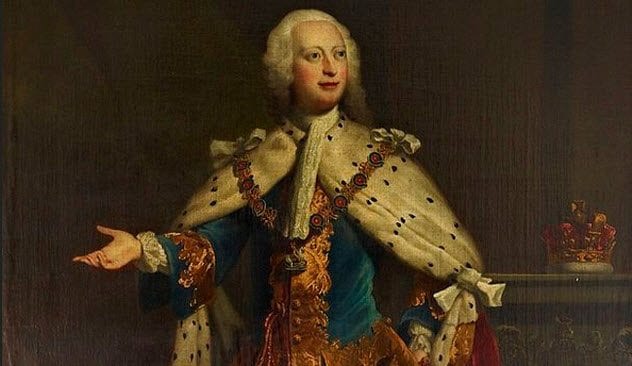
But for the throw of a cricket ball, it’s possible that Great Britain may never have lost its colonies in North America. You have never heard of King Frederick of the United Kingdom for the very good reason that he died before ever getting to wear the crown.
Frederick, the eldest son of George II, was struck on the chest by a cricket ball. The heir to the throne developed an abscess from the injury. When this burst internally, he quickly became ill and died in 1751. That was the cause of death reported at the time, and the story of the cricket ball is still used in academic papers. However, there are those who consider Frederick to have died of pneumonia unrelated to his sporting injuries.
If the cricket ball did kill the prince, it was bad news for him but good news for the prince’s son. He became the new heir to the throne. This young lad grew up to be George III, the Mad King George of legend, whose government lost him the American colonies. Who knows how King Frederick would have handled the rebellion?
